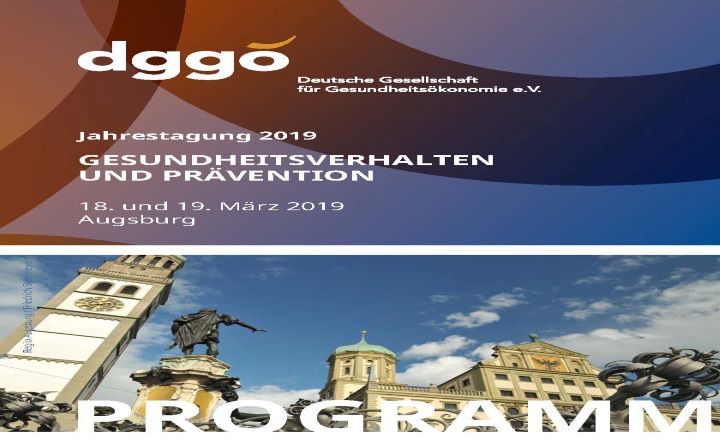News&Events

Conference of the German Association for Health Economics (DGGÖ) "Gesundheitverhalten und Prävention"
Regulatory and HTA Evidence Misalignments: a Systematic Review of Literature on Medicinal Products
and Medical Devices (download pdf)
Florian Dams (Universität Bern)
Introduction: Health technology assessment bodies (HTABs) largely depend on evidence gathered for the market authorization and conformity assessment. This data is often of limited use for HTAs as the different objectives of regulators and HTABs lead to divergent evidence requirements. Yet, manufacturers tend to focus on regulatory requirements whilst disregarding to establish HTA-relevant evidence. Hence, licensed medical technologies could be sold on the market, but third party payers often require additional evidence for reimbursement, leading to delays in patient access. Initiatives in several countries aim to align regulatory and HTA-requirements, e.g., by offering manufacturers joined early advice meetings. This review systematically collects misalignments between regulators and HTABs and among HTABs.
Methods: Five scholar databases (Medline, Web of Science, EMBASE, Cochrane Library, CRD York) were searched systematically using the following search terms: regulator AND HTA AND misalignment. Literature search was conducted on February 7th, 2018. Two reviewers independently screened the literature and extracted characteristics that affect (i) the regulatory approval or HTA, (ii) regulatory or HTA evidentiary requirements or (iii) pathways through the third and fourth hurdle. In case of disagreement, a third reviewer was involved to resolve upcoming issues.
Results: A total of 1,690 articles were identified. 59 met the inclusion criteria after full text screening. Non-systematic search and snow-balling led to 9 additional studies. Most studies were excluded when the method of the study was not described (n=54). The second most common reason for exclusion was that the full text was missing (n=16). Finally, eight studies were excluded because they were systematic literature reviews (n=8).
Discussion: Diverging preferences of regulators and HTABs on efficacy and effectiveness stipulate requirements for clinical trial design that are not compatible or even mutually exclusive. Regulators’ and HTABs’ view on facilitated access pathways is not aligned because HTABs often do not accept the same level of uncertainty. Regulatory requirements have reached a decent level of alignment across countries, whereas evidence requirements among HTABs deviate internationally in several aspects—despite their shared objectives.
Conclusions: There are justifiable limits to the alignment of regulatory and HTA evidence requirements due to their comprehensible different objectives. In contrast, divergent evidence requirements among HTABs of different countries are more a result of differing methodologies used to pursue similar objectives.
Declaration of funding: “This project has received funding from the European Union’s Horizon 2020 research and innovation programme under grant agreement No 779306”